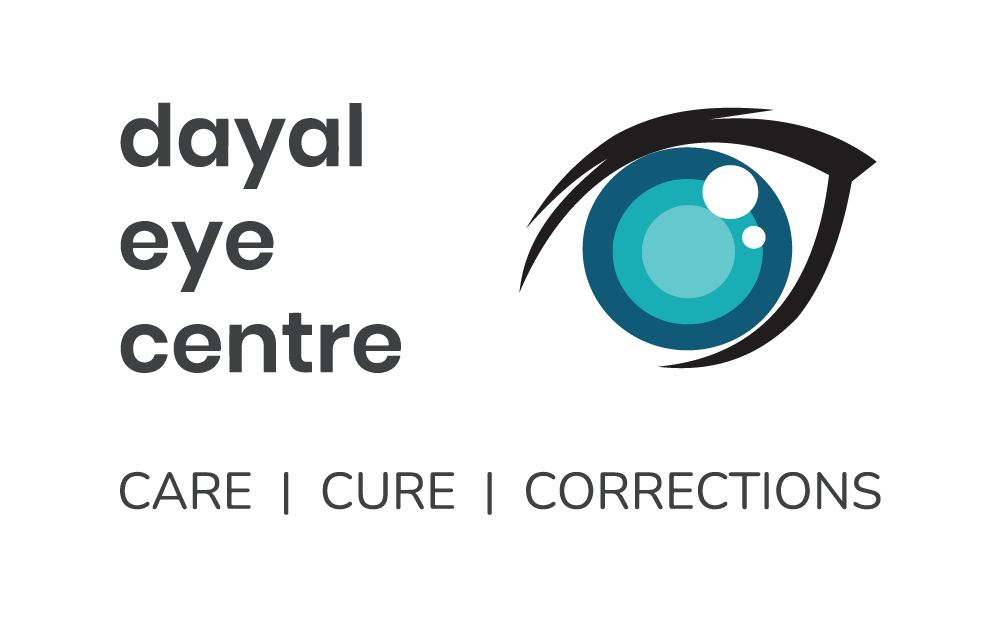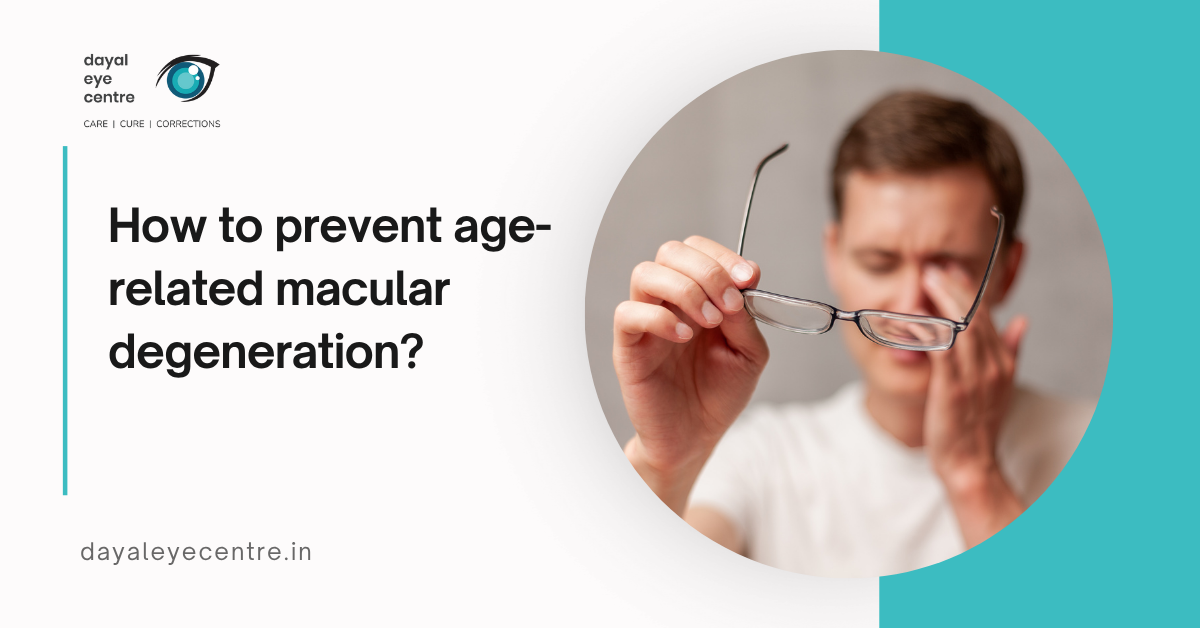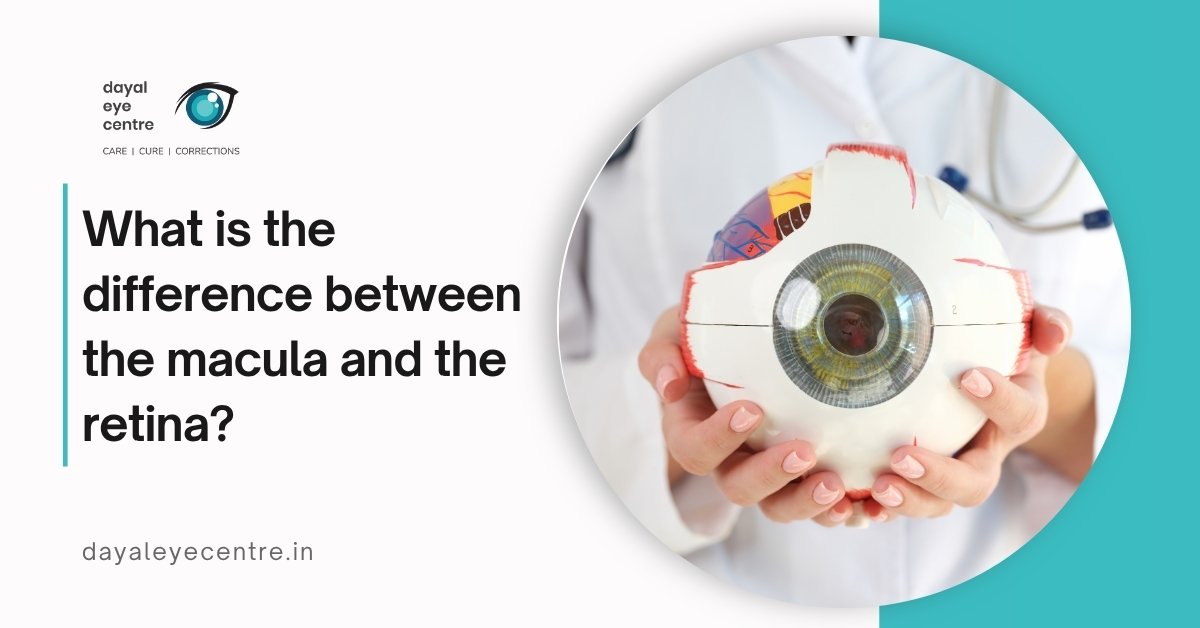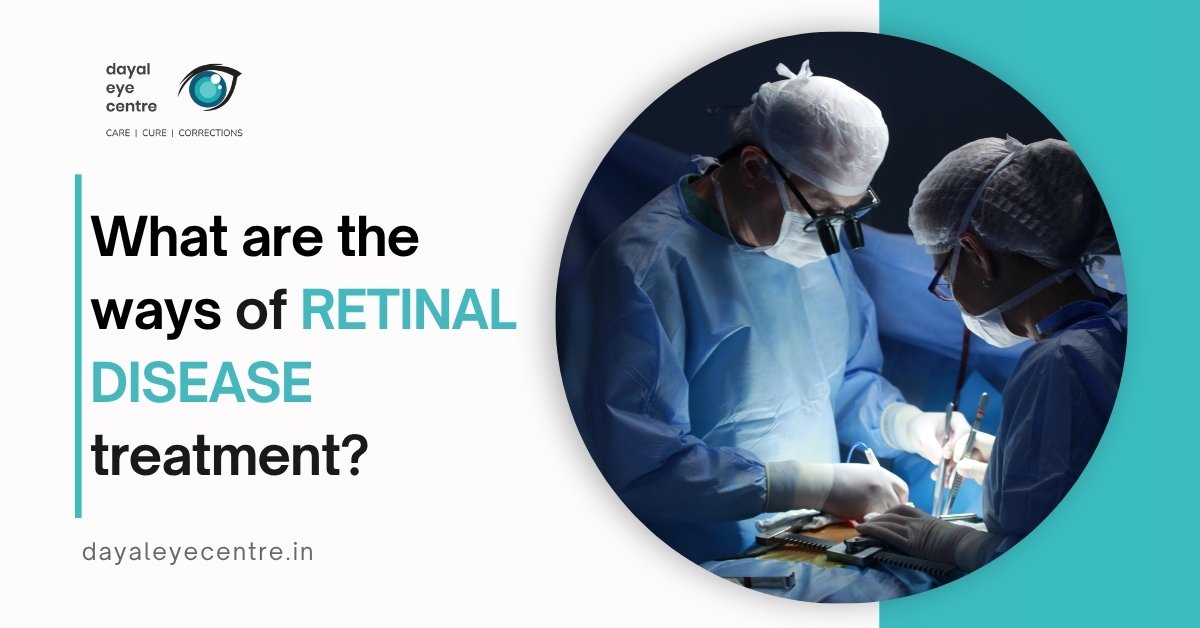Retina treatment includes many medical and surgical procedures that help fix various conditions affecting the retina. The retina is a thin layer of light-sensitive tissue at the back of your eye. This delicate tissue plays a vital role in vision. It converts light into neural signals that your brain reads as images.
Definition of retina treatment in ophthalmology
Doctors use retina treatments to repair or preserve the retina’s function when disease or injury damages it. These treatments come in several types:
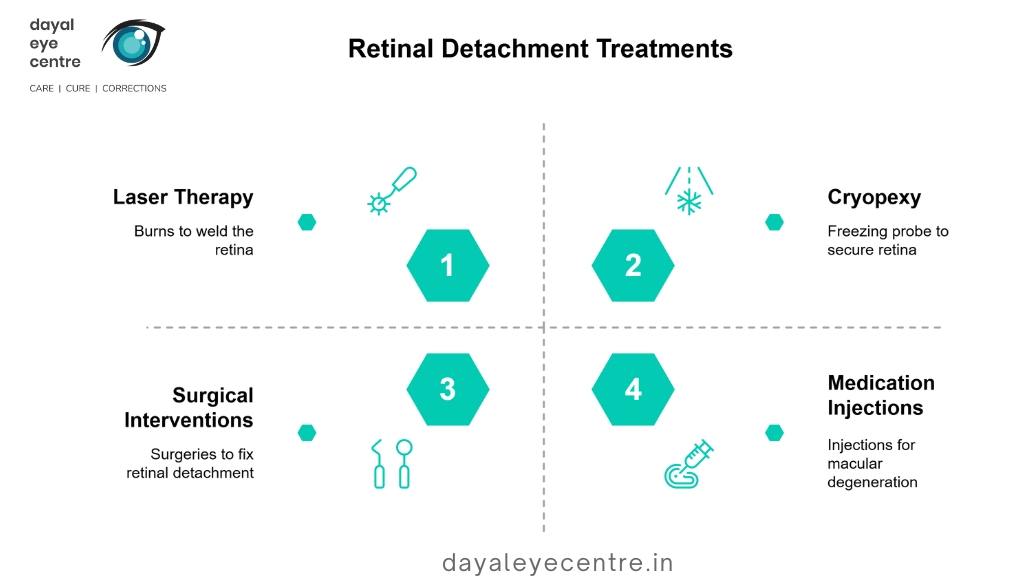
- Laser therapy (photocoagulation): Creates burns around retinal tears that form scars to “weld” the retina to underlying tissue
- Cryopexy (freezing treatment): Uses a freezing probe to create scarring that secures the retina to the eye wall
- Surgical interventions: Including pneumatic retinopexy, scleral buckle, and vitrectomy
- Medication injections: We mainly use these for conditions like macular degeneration
Your doctor will pick the best treatment based on your specific condition, how severe it is, and where it’s located in your eye. These treatments might seem scary, but they work really well – they succeed in about 9 out of 10 patients when done quickly.
Conditions that commonly require intervention
Retinal detachment needs the most urgent care among all retinal conditions. Retina specialists also treat:
- Proliferative diabetic retinopathy: Laser treatment works best here
- Macular edema: A mix of focal and grid laser therapy usually helps
- Retinal tears or holes: These need quick treatment to stop detachment
- Neovascular diseases: Including those linked to age-related macular degeneration
- Central serous retinopathy: Doctors treat this with photodynamic therapy or MicroPulse laser
- Vascular occlusive diseases: These often need different treatments combined
Quick treatment is vital for most of these conditions. Some conditions like diabetic retinopathy need ongoing care to keep them under control.

Retinal detachment pathophysiology overview
Retinal detachment happens when the neurosensory retina pulls away from the retinal pigment epithelium (RPE) and choroid. This separation occurs in three different ways, matching the three types of detachment:
Rhegmatogenous detachment – This is the most common type. It happens when a tear in the retina lets liquefied vitreous fluid leak underneath, which pulls the retina away from supporting tissue. Three things usually happen first:
- The vitreous turns liquid (vitreous syneresis)
- Forces pull and create a retinal break
- Fluid flows through the break into the subretinal space
Tractional detachment – This occurs when fibrous membranes or scar tissue pull the retina away from the RPE without any tears. You often see this in advanced diabetic retinopathy cases where scar tissue forms and shrinks.
Exudative detachment – This type develops when fluid builds up between the neurosensory retina and RPE without breaks or pulling. Leaking blood vessels cause this fluid buildup, usually due to inflammation, high blood pressure, or tumors.
The separated retina loses its blood supply from tissues below once detachment starts. This leads to tissue damage and dying photoreceptors. Quick recognition and treatment are essential. Any delay raises the risk of permanent vision loss. Doctors call retinal detachment a medical emergency, even though it usually doesn’t hurt.
Watch out for sudden increases in floaters, flashes of light, or shadows in your vision. These might signal retinal detachment, and you should see a doctor right away.
Types of Retinal Detachment and Their Implications
Understanding different types of retinal detachment helps doctors choose the right treatment. Each of these three types is different in how it happens, what causes it, and how doctors treat it.
Rhegmatogenous detachment: tear-induced
Rhegmatogenous retinal detachment, pronounced “reg-ma-todge-en-us,” is the most common type you’ll see. It happens when the retina develops a tear, break, or hole. This allows the liquefied vitreous fluid to leak underneath and pull the neurosensory retina away from the retinal pigment epithelium.
The process needs three main things to happen: the vitreous fluid turns liquid (vitreous syneresis), forces that create a retinal break, and fluid that seeps through this break into the subretinal space. As people get older, their vitreous gel naturally shrinks and becomes thinner. Sometimes this pulls on the retina hard enough to create tears.
This type of detachment can develop faster or take several weeks to months. Here’s what puts people at risk:
- Getting older
- Eye surgeries in the past
- Severe nearsightedness
- Eye injuries
- Previous retinal detachment in the other eye
- Inherited conditions like Stickler syndrome
- Lattice degeneration and other retinal problems
Tractional detachment: diabetic retinopathy link
Tractional retinal detachment (TRD) works differently – there are no tears or breaks. Instead, thick fibrous strands or scar tissue pull the retina away from its base layer. These cases show membrane contraction that creates pulling forces on the retina.
Diabetes is the biggest reason people get tractional detachment. About 5% of patients who have proliferative diabetic retinopathy face this serious complication, even after getting panretinal photocoagulation treatment. Here’s what happens:
- High blood sugar leads to closed capillaries and retinal ischemia
- Growth factors, especially VEGF, increase
- Abnormal blood vessels form and break through the retina’s internal limiting membrane
- Fibrovascular membranes develop and pull on the retina
On top of that, other conditions can cause tractional detachment: sickle cell retinopathy, retinal vein occlusion, eye trauma, penetrating injuries, and various inflammatory eye diseases.
Exudative detachment: fluid accumulation causes
Exudative (or serous) retinal detachment happens when fluid builds up under the retina without any tears or pulling. This type is different from the others because the fluid comes from leaking blood vessels or a damaged blood-retina barrier.
These conditions often lead to exudative detachment:
- Inflammatory conditions (like Vogt-Koyanagi-Harada syndrome and posterior scleritis)
- Vascular disorders (high blood pressure, central retinal vein occlusion)
- Eye tumors (such as choroidal melanoma)
- Age-related macular degeneration
- Central serous chorioretinopathy
Doctors usually need to perform surgery for rhegmatogenous and tractional detachments. However, exudative cases often get better with medicine or laser treatment that targets the root cause. Treatment focuses on fixing what’s causing the fluid buildup rather than repairing physical breaks.
Every type of retinal detachment needs immediate medical attention because it can cause permanent vision loss. Knowing which type a patient has helps eye doctors pick the best treatment and predict how well the patient’s vision might recover.
How Retinal Detachment Is Diagnosed
Quick diagnosis plays a vital role in successful retinal detachment treatment. Eye specialists use several complementary techniques to spot detachment and figure out how far it has spread.
Retinal exam with dilation
Diagnosing retinal detachment starts with a detailed dilated eye examination. The ophthalmologist uses special eye drops to widen the pupil. This creates a clear window to see the retina. The painless exam lets doctors look at the eye’s back directly to check for detachment signs. Doctors might need to press the eyelids gently to check for retinal tears. Some patients find this a bit uncomfortable.
Doctors use an ophthalmoscope – a tool with bright light and special magnifying lenses to examine the retina. Getting the full picture often needs peripheral fundus examination. This can happen through indirect ophthalmoscopy with scleral depression, slit lamp examination, or a 3-mirror lens. These methods help catch peripheral detachments that direct funduscopy might miss.
OCT and ultrasound for structural imaging
Optical Coherence Tomography (OCT) is a non-invasive imaging technique. It uses light to create detailed cross-sectional images of retinal layers. This quickest way helps eye doctors see structural changes without causing patient discomfort. Doctors can get OCT images at different times – during first diagnosis, before treatment, and while monitoring after treatment to track retinal layer changes.
Ocular ultrasound becomes a great way to get results when doctors can’t see the retina directly because of vitreous hemorrhage, cataracts, or other issues. Research shows ultrasound spots detachment extent within three clock hours 94.2% of the time. The technique also identifies 90% of detached maculae before surgery. B-scan ultrasonography and standardized echography work together to give reliable detection and details about retinal detachment when the eye’s media is cloudy.
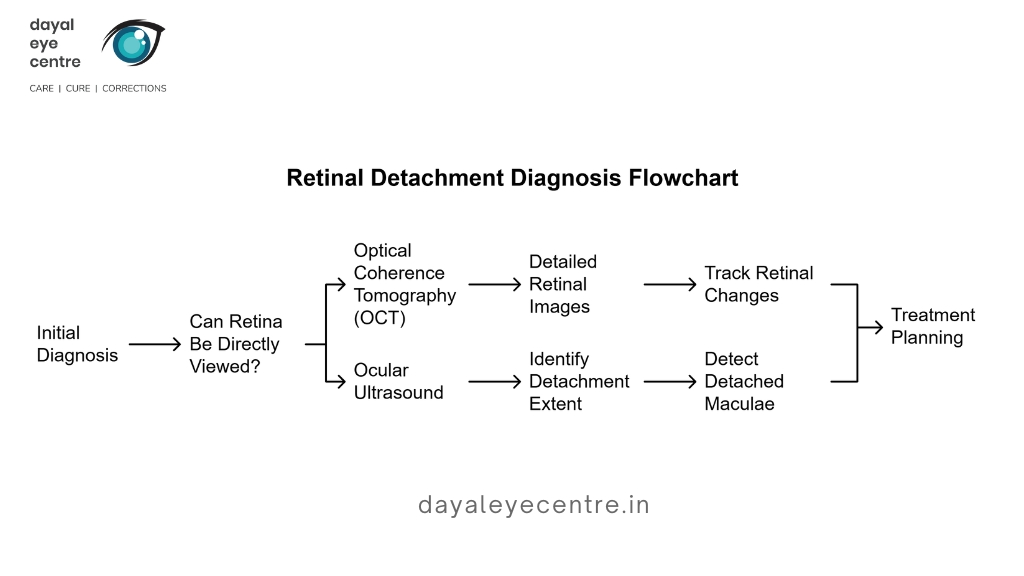
Fluorescein angiography for blood vessel analysis
The fluorescein angiography process needs a yellowish dye (fluorescein) injection into a vein in the arm. The dye moves through the body in 10-15 seconds and reaches the eye’s blood vessels. This makes them “fluoresce” or shine bright. A special camera takes pictures as the dye flows through retinal circulation. These images show problems that regular exams might miss.
We used this method mainly for diabetic retinopathy and macular degeneration. It helps separate different types of retinal conditions. To cite an instance, it shows the difference between diabetic macular edema and pseudophakic cystoid macular edema through specific leakage patterns. The technique works especially well when you have patients with myopia and recent vision loss. Sometimes choroidal neovascularization doesn’t show up during clinical exams.
Surgical and Non-Surgical Retina Treatment Options
Treatment options for retinal conditions vary widely. They range from simple procedures to complex surgeries. The best approach depends on how severe the condition is and what type of problem needs fixing.
Laser therapy and cryopexy for minor tears
Small retinal tears or holes that haven’t detached yet can be treated with laser photocoagulation or cryopexy. Laser therapy creates small burns around the tear and forms scars that “weld” the retina to underlying tissue. Doctors perform this outpatient procedure through the pupil. Patients might see flashing lights during the treatment.
Cryopexy offers another option that uses a freezing probe on the outer eye surface right over the tear. The cold creates scar tissue to secure the retina. The doctor numbs the eye first and touches the white part nearest to the tear with the probe. Patients usually feel cold or pressure. Both treatments need patients to rest and avoid heavy activities for 1-2 weeks while they heal.
Pneumatic retinopexy for localized detachment
Some localized detachments respond well to pneumatic retinopexy, especially those in the superior 8 clock-hours of the fundus. This office procedure uses a gas bubble (SF6 or C3F8) injected into the vitreous cavity. The bubble gently pushes the detached retina against the eye wall. The doctor then seals the tear with laser photocoagulation or cryopexy.
The patient’s head position is vital after this procedure. They must keep their head in a specific position for up to a week so the bubble stays in place. Success rates vary – 71-84% for phakic patients and 41-67% for pseudophakic patients.
Scleral buckle for structural support
A scleral buckle procedure attaches a silicone band or sponge to the eye’s white part (sclera). This creates an indentation that eases vitreous traction on the retina. The surgery pushes the eye wall toward the detached retina to help it reattach. Most buckles stay in place permanently and have impressive success rates of 80-90%.
Vitrectomy for complex or recurrent cases
Complex detachments need vitrectomy. The surgeon removes the vitreous gel, peels away membranes pulling on the retina, and injects air, gas, or silicone oil to flatten the detached area. Tough cases might need both vitrectomy and scleral buckling. The surgery takes about two hours, and 90% of detachments get fixed in one operation.
Medication injections for macular degeneration
Anti-VEGF injections lead the way in treating wet age-related macular degeneration. These medications include Lucentis, Eylea, Beovu, Vabysmo, and Avastin. Doctors inject them directly into the eye to stop blood vessels from growing and prevent vision loss. The treatment improves vision in one-third of patients and stops vision loss in 90% of people with wet macular degeneration. Patients need injections every 4 to 12 weeks, depending on their medication.
What to Expect After Retina Treatment
Getting better after retina treatment needs patience and careful attention to your doctor’s instructions. Your recovery time depends on the type of procedure and how your body heals.
Vision improvement timeline
Your vision stays blurry for several weeks after surgery. Most patients see improvements 4-6 weeks after the procedure. Full stabilization takes longer – your vision might take months to return to normal. The retina needs a year or more to heal completely. Each procedure has its own timeline: pneumatic retinopexy takes 3+ weeks, while scleral buckle and vitrectomy need 4+ weeks. Your vision should get better step by step rather than all at once.
Possible complications: cataracts, pressure changes
Every retinal surgery comes with risks. Common complications include eye infections, internal bleeding, high eye pressure, glaucoma, and cataract formation. Medical records show some patients need another surgery because of improper reattachment or recurring detachment. You should call your doctor right away if your vision gets worse, you feel intense pain, or notice major swelling after treatment.
Post-surgery care: eye patch, head position, drops
The right post-operative care plays a vital role in your recovery. These elements matter most:
- Medication adherence: Use prescribed eye drops to fight infection and reduce swelling
- Positioning: Keep your head in specific positions (often face down) for up to seven days with gas bubble procedures
- Eye protection: Wear an eye patch/shield at first to avoid accidental injury
- Rest: Give yourself 2-6 weeks to heal properly without eye strain
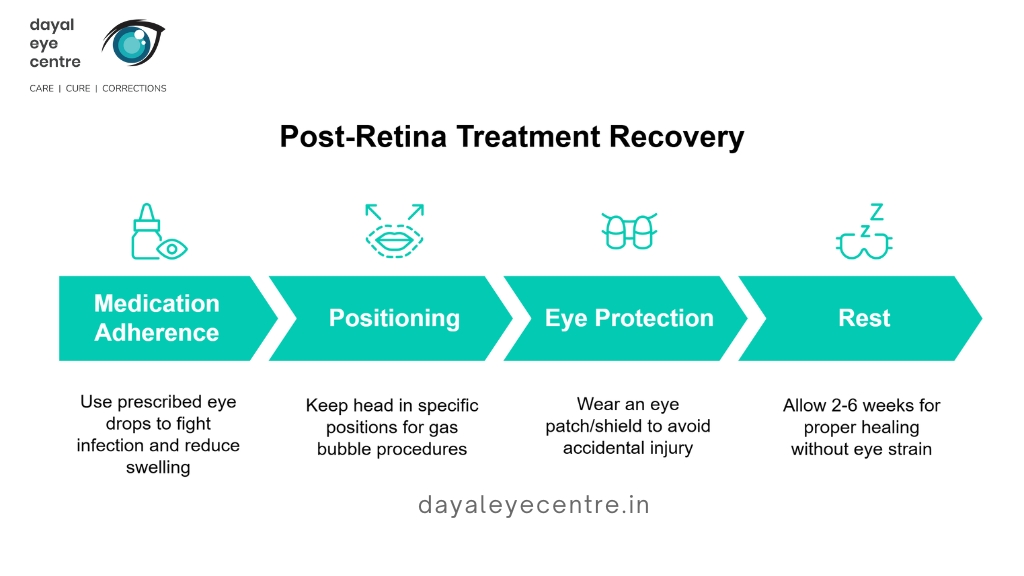
When to resume normal activities
Normal activities resume gradually. You can return to office work after 1-2 weeks, but physical jobs need more time. Stay away from heavy lifting, bending, and hard exercise for at least two weeks. Sexual activities can start after one week, but be careful if you still have gas bubbles. Driving restrictions last until your vision stabilizes and your doctor says it’s okay.
Conclusion
Retinal detachment is one of the most serious eye emergencies that needs quick medical care. This piece covers three main types of detachments—rhegmatogenous, tractional, and exudative. Each type has its own causes and treatment methods. Your vision can be saved through complete eye exams. This becomes even more vital if you have extreme myopia, previous eye injuries, or conditions like diabetic retinopathy.
Doctors can successfully treat 90% of cases when patients get help right after seeing warning signs. These signs include sudden flashes, more floaters, or changes in vision that look like shadows. Different treatments are available. They range from laser therapy and cryopexy for small tears to complex procedures like vitrectomy for severe cases. This knowledge helps patients make better decisions with their ophthalmologists.
Vision improves slowly over weeks after retinal treatment. The long-term results depend on how well you follow post-operative instructions. You’ll need to keep your head in certain positions, use medication drops, and stay away from heavy activities. While some patients might develop cataracts or pressure changes, most achieve successful reattachment with proper care.
Modern retinal treatments work well, but regular eye check-ups are your best protection against vision loss. The healing process takes time, but saving your sight is worth the effort. Quick action when you notice unusual visual symptoms could save your vision at critical moments.
FAQs
When is retina surgery necessary?
Retina surgery becomes necessary when the retina detaches from its normal position. This is considered a medical emergency that requires immediate attention to prevent permanent vision loss. Surgery is typically needed for retinal tears, holes, or detachments that cannot be treated with less invasive methods like laser therapy or cryopexy.
What are the common symptoms of retinal problems?
Common symptoms of retinal problems include sudden flashes of light, a rapid increase in floaters, blurred or distorted vision, difficulty seeing in low light, and the appearance of a dark shadow or curtain across your field of vision. If you experience any of these symptoms, it's crucial to seek immediate medical attention.
How successful are retina treatments?
Retina treatments, particularly for rhegmatogenous detachment, have a high success rate of approximately 90% when performed promptly. The success rate can vary depending on the type and severity of the retinal condition, as well as how quickly treatment is sought after symptoms appear.
What does recovery after retina treatment look like?
Recovery after retina treatment is a gradual process. Initially, vision remains blurry for several weeks. Improvements are typically noticed within 4-6 weeks after the procedure, but complete stabilization may take months. The retina itself may require a year or more to fully heal. Patients need to follow post-operative instructions carefully, which may include maintaining specific head positions and using prescribed eye drops.
Can retinal detachment be treated without surgery?
In some rare cases, retinal detachment can be treated without surgery. This typically occurs when the detachment is caused by fluid buildup behind the retina due to a disease or injury. In such instances, treating the underlying condition may resolve the detachment. However, most cases of retinal detachment, especially those involving tears or holes, require surgical intervention for proper treatment and vision preservation.
